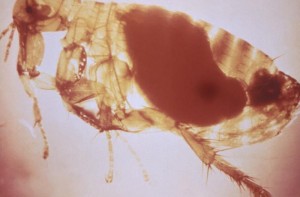The Ministry of Health of Madagascar has reported an outbreak of plague that since late August has affected 119 people.

According to a World Health Organization report today, the first case, a male from Soamahatamana village in the district of Tsiroanomandidy, was identified on 31 August. The patient died on 3 September.
As of 16 November, a total of 119 cases of plague have been confirmed, including 40 deaths (33% case fatality rate). Only 2% of reported cases are of the pneumonic form.
Cases have been reported in 16 districts of seven regions. Antananarivo, the capital and largest city in Madagascar, has also been affected with 2 recorded cases of plague, including 1 death.
Health officials note that because of the city’s high population density and poor health infrastructure, in addition to the high level of resistance to the insecticide, deltamethrin, there is now a risk of a rapid spread of the disease.
The national task force has been activated to manage the outbreak. With support from partners – including WHO, the Pasteur Institute of Madagascar, the “Commune urbaine d’Antananarivo” and the Red Cross – the government of Madagascar has put in place effective strategies to control the outbreak.
Personal protective equipment, insecticides, spray materials and antibiotics have been made available in those areas.
Related: Congo, Madagascar top countries reporting most plague 2000-2009, US reports 57 cases
The term “plague” has struck fear into the hearts of people for centuries and for good reason. Historically, plague has destroyed entire civilizations. Probably the most noteworthy, the “Black Death” of the 1300s, that killed approximately one-third of Europe’s population.
Plague is an infectious disease caused by the bacterium, Yersinia pestis. It is found in animals throughout the world, most commonly rats but other rodents like ground squirrels, prairie dogs, chipmunks, rabbits and voles. Fleas typically serve as the vector of plague. Human cases have been linked to the domestic cats and dogs that brought infected fleas into the house.
People can also get infected through direct contact with an infected animal, through inhalation and in the case of pneumonic plague, person to person.
Yersinia pestis is treatable with antibiotics if started early enough.
There are three forms of human plague; bubonic, septicemic and pneumonic. For more infectious diseasenews and information, visit and “like” the Infectious Disease News Facebook page


6 thoughts on “Madagascar reports plague outbreak, 119 cases seen since August”